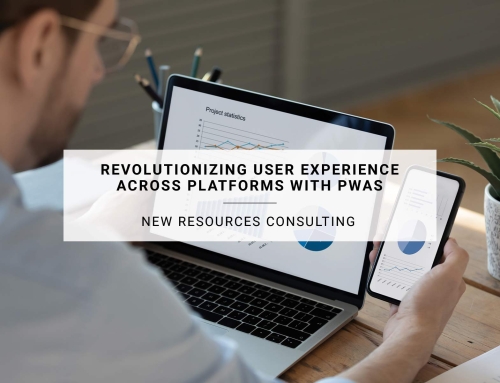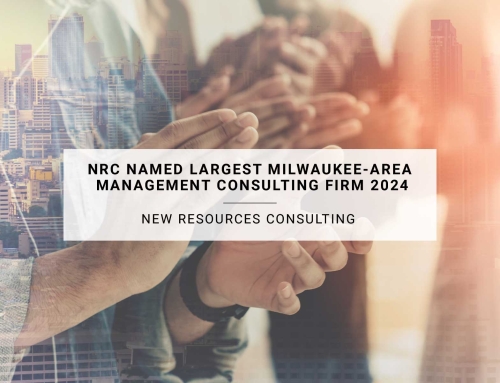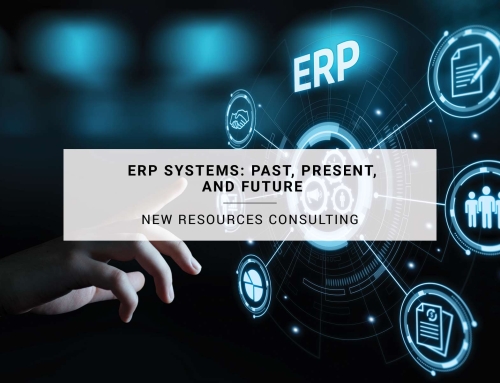Companies of all industries are finding that IT talent is vital for success. With so many companies searching for top tier IT talent, technology professionals are approached constantly and offered jobs. “IT Pros say they receive 32 job solicitations a week,” according to Career Builder (Thomson, 2020). With so much competition for IT talent, it is extremely important for companies to stand out in order to hire, retain, and energize talent. One of the main reasons IT talent leaves jobs is due to the concern that there is a lack of opportunities for advancement (Thomson, 2020). The reason IT professionals join and stay at a company is because it has a stronger career path, opportunities for hands-on experience, a culture of trust, strong mentors, and an inclusive and flexible environment.
Cultivate a career path
Career advancement and opportunity is a major factor in attracting talent. “78% of employees say they would remain longer with an employer that provides a clear career path,” (Thompson, 2020). Finding out what employee’s goals are for their career and helping them to achieve it is oneway, former head of IT at LinkedIn, Craig Williams, suggests. Williams shares that techniques to keeping great people inspired and engaged is by helping them to reach their career goals, “knowing that’ll help us achieve [the company’s] goals as well,” (Thomson, 2020). Williams discussed that he would have his staff draft career development plans that showed what they were passionate about. They then were tasked with identifying two skills that would help them to get better at their career. LinkedIn then focused on supporting the staff with the skills they needed to achieve that career path. This technique is a great way to retain and energize talent.
Hands-On Experience
A way to support current talent as well as incoming talent is to provide hands-on experience to build their skill set. For those that have identified their career goals, management can provide shadowing opportunities, on-demand training resources, and activities like hack-a-thons. These various activities will help staff to build skills that help them to achieve their career goals (Thomson, 2020). By showing commitment to staff’s interests and career passion through offering experience, the percent of highly engaged employees goes up. This is a challenge as a Gallup study showed that only 13% of all employees are highly engaged (Crabtree, 2013). Glassdoor, an employer rating site, shared that only 54% of employees even recommend their company as a good place to work, (Glassdoor, 2014). Actively considering what hands-on experience will help support and engage workers is necessary for attracting and retaining talent.
Trust
While some may argue that it is counterproductive to let people take time off during the week, studies show that the opposite is true. “Overworked people tend to burn out, produce lower-quality output, and become depressed,” (Bersin, 2015). Providing staff with flexibility in schedules allows them to relax, be more successful and perform better. This means employers need to trust that they hired the right people for the job, that their staff will get their work done, that they will meet expectations while still having flexible schedules, or that they have the ability to work remotely. Employers that don’t trust their staff may be more likely to stifle and over exhaust their staff, causing a turnover of employees (Bersin, 2015). In order to retain and energize staff, management must accommodate and trust.
Mentorship
Trust is also important for the staff to have for their employers. A trust in leadership means a confidence in the company’s well-being, and that can be achieved through clear mentorship. If staff trust management, they are more likely to stay. Ways that management can earn trust is by using a coaching methodology which aids in employee engagement and retention (Bersin, 2015). A coaching style of leadership means understanding people’s strengths and getting them in the right position to use those strengths. Staff want to feel and be successful; a good coach will help them get there. The style of mentorship should include continuous and ongoing recognition of an employee’s success. Coaching and mentorship means that leadership guides, supports and encourages their staff. “High-recognition companies have 31% lower voluntary turnover than companies with poor recognition cultures,” (Bersin, 2015).
Community
The community of a workplace also can attract, retain or energize talent. It is much more than just having a lounge for employees; it is about creating a welcoming environment that fosters diversity and inclusion (Bersin, 2015). Diverse workplaces and ones that advocate for corporate social responsibility are important factors for IT professionals looking for work, particularly for Millennials (Thomson, 2020). Inclusive culture organizations outperform their peers by 80% proving that diversity of thought can make a major difference in the success of on organization, (Bersin, 2015). Even if companies make an effort to hire diverse individuals of different backgrounds and experiences, they still may not have a culture within their organization that allows those individuals to thrive. If the culture within an organization accepts language and behavior that is demeaning and exclusive of other ways of thought, then those diverse staff members will likely leave once they discover office social and political climate. Making diversity and inclusion a part of the corporate culture creates an accepting community for all, encouraging longer tenures of staff and higher levels of fulfillment (Thomson, 2020).
Environment
Flexible work environments that foster collaboration, relaxation, and creativity are enticing to IT professionals. Work environments that have open offices, recreational break areas, and unique perks stand out. Some perks that excite IT professionals are bringing your dog to work, casual attire, and flexible work hours. Although fun perks like pool tables and bean bags may seem silly, the casual and creative set up inspires higher quality work, and relaxed employees who are more likely to stay on at a company. Furthermore, the layout of an office and seating that creates a flat hierarchy keeps staff coming back. Thoughtful office design “boosts innovation and creative thinking, employee retention and overall engagement,” (Manciagli, 2014).
Overall, employers need to think about their organization and determine what existing benefits IT professionals would be getting and draw conclusions about where improvements need to be made. Maybe the organization is already providing great mentorship, trusting its employees and providing hands-on opportunities, but may need to encourage more diverse staff and create a welcoming and safe environment for individuals to be themselves.
Sources
Bersin, Josh. (2015). Becoming irresistible: A new model for employee engagement Deloitte Review Issue 16. Deloitte. Retrieved from https://www2.deloitte.com/us/en/insights/deloitte-review/issue-16/employee-engagement-strategies.html
Crabtree, Steve. (2013). Worldwide, 13% of Employees Are Engaged at Work. Retrieved from https://news.gallup.com/poll/165269/worldwide-employees-engaged-work.aspx
Heller, Martha. (2018). 4 Criteria to attract top IT talent. CIO. Retrieved from https://www.cio.com/article/3320917/4-criteria-to-attract-top-it-talent.html#:~:text=As%20the%20battle%20to%20hire,ability%20to%20attract%20technology%20leaders.
Glassdoor. (2014). Glassdoor Unveils Benefits Reviews & Ratings. Retrieved from https://www.glassdoor.com/blog/glassdoor-unveils-benefits-reviews-ratings/
Manciagli, Dana. (2014). How to design office spaces to attract and retain great talent. Retrieved from https://www.bizjournals.com/bizjournals/how-to/human-resources/2014/05/how-to-design-office-spaces-to-attract-and-retain.html
Thomson, Lindsay. (2020). How to Attract and Retain Top Technology Talent. LinkedIn Learning. Retrieved from https://business.linkedin.com/content/dam/me/learning/en-us/pdfs/lil-guide-attract-retain-top-tech-talent.pdf
Wiles, Jackie. (2019). 9 Ways for CHROs to Attract Top Tech Talent. Gartner. Retrieved from https://www.gartner.com/smarterwithgartner/9-ways-for-chros-to-attract-top-tech-talent/
Yoder, Steve. (2012) Is America Overworked? Fiscal Times. Retrieved from http://www.thefiscaltimes.com/Articles/2012/02/






